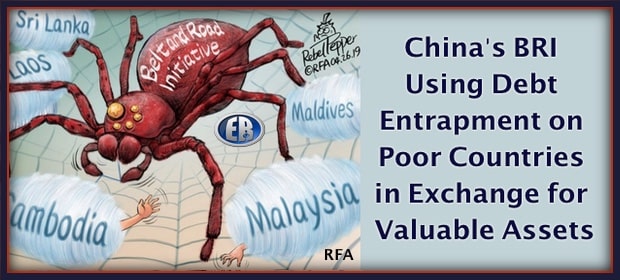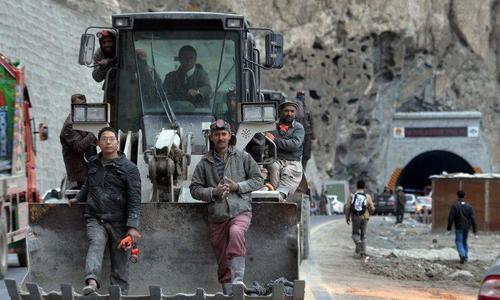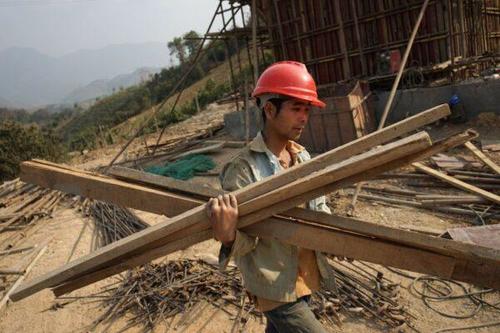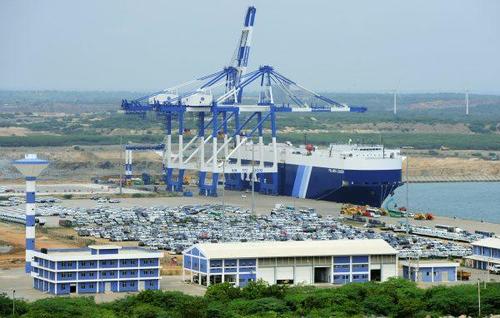
China’s Belt And Road Faces Growing Opposition From Participating Countries As Debts Mount
Authored by Daniel Holl via The Epoch Times
China’s Belt and Road Initiative (BRI) is facing growing opposition from participating countries as their debts associated with Chinese projects mount, according to a recent study.
The study analyzed 13,427 projects backed by China in more than 165 countries over 18 years. The projects’ total value amounts to $843 billion.
AidData found that 35 percent of BRI’s projects dealt with implementation problems, “such as corruption scandals, labor violations, environmental hazards, and public protests.”
Brad Parks, one of the study’s authors, said “a growing number of policymakers in low- and middle-income countries are mothballing high profile BRI projects because of overpricing, corruption and debt sustainability concerns.”
Global Expansion
The BRI—which serves as a tool for the Chinese Communist Party’s (CCP) global expansion—finances enormous loans to developing nations for building infrastructure.
The ostentatious projects have been described as being a part of so-called debt-trap diplomacy since the often unpayable loans will force the nations to repay China with goods or land.
Chinese state-owned banks provide the countries with loans they can barely afford. The loans are then used to pay Chinese companies in order to build infrastructure, including the development of roads, ports, power plants, mines, telecommunications, or banking institutions.
When the nations are unable to pay, they must grant China assets like long-term exploitation rights for natural resources, or leases of infrastructure built using the loans.
A Chinese worker carrying materials for a project that is part of China’s Belt and Road Initiative in Laos, on Feb. 8, 2020 (Aidan Jones/AFP via Getty Images)
According to AidData’s report, 42 low- and middle-income countries have public debt exposure to China that exceeds 10 percent of its gross domestic product (GDP).
“China has used debt rather than aid to establish a dominant position in the international development finance market,” the report said.
The report said that researchers estimated that a government of an average low-to-middle-income country participating in the BRI are underreporting its actual and potential repayment obligations to China by an amount that is equivalent to 5.8 percent of its GDP.
“Collectively, these underreported debts are worth approximately $385 billion,” the report said.
When agreeing to join BRI, countries expect the new infrastructure will boost their GDPs enough to not only to repay the debt, but also profit in the future. However, most nations do not become prosperous from the projects, according to Antonio Graceffo, an economics professor.
Graceffo has argued that the poorest nations are overburdened with BRI debt, citing a Central Banking report that stated 23 percent of countries involved in the initiative said BRI debt is building external debt up to unsustainable levels.
For instance, in December 2017 Sri Lanka leased the major Hambantota Port to Beijing for 99 years, due to its inability to pay BRI owed loans of $1.4 billion. This gave the CCP a key base in the Indian Ocean.
A general view of the port facility at Hambantota in Sri Lanka, on Feb. 10, 2015. (Lakruwan Wanniarachchi/AFP/Getty Images)
In an article published by the Gatestone Institute, Lawrence A. Franklin stated that BRI’s economic benefits—mainly in third-world countries—are questionable, and “a few of these bilateral packages appear contrived to imprison already impoverished states into realms of permanent economic vassalage to China.”
Franklin further said that Beijing’s goals with BRI are not only economic but also strategic and political. Its “projects seem not designed so much to win new friends as to win new dependents, especially in areas either neglected by the West or in the Western sphere of influence.”
AidData’s study also evaluated that since 2013, there were many suspensions and cancellations in BRI participant countries. Malaysia canceled $11.58 billion in projects, Kazakhstan nearly $1.5 billion, and Bolivia over $1 billion. It further states in some countries “there’s clear evidence of ‘buyer’s remorse’.”
The report also mentions that China’s annual international development finance commitments are double that of the United States’ and other major countries.
Meanwhile, in June, the United States announced a new G7 initiative Build Back Better World (B3W), whose objective is to supply developing countries with financial support to build infrastructure.
“B3W is going to increase choice in the infrastructure financing market, which could lead to some high-profile BRI defections,” Parks said.
************
Source

••••
The Liberty Beacon Project is now expanding at a near exponential rate, and for this we are grateful and excited! But we must also be practical. For 7 years we have not asked for any donations, and have built this project with our own funds as we grew. We are now experiencing ever increasing growing pains due to the large number of websites and projects we represent. So we have just installed donation buttons on our websites and ask that you consider this when you visit them. Nothing is too small. We thank you for all your support and your considerations … (TLB)
••••
Comment Policy: As a privately owned web site, we reserve the right to remove comments that contain spam, advertising, vulgarity, threats of violence, racism, or personal/abusive attacks on other users. This also applies to trolling, the use of more than one alias, or just intentional mischief. Enforcement of this policy is at the discretion of this websites administrators. Repeat offenders may be blocked or permanently banned without prior warning.
••••
Disclaimer: TLB websites contain copyrighted material the use of which has not always been specifically authorized by the copyright owner. We are making such material available to our readers under the provisions of “fair use” in an effort to advance a better understanding of political, health, economic and social issues. The material on this site is distributed without profit to those who have expressed a prior interest in receiving it for research and educational purposes. If you wish to use copyrighted material for purposes other than “fair use” you must request permission from the copyright owner.
••••
Disclaimer: The information and opinions shared are for informational purposes only including, but not limited to, text, graphics, images and other material are not intended as medical advice or instruction. Nothing mentioned is intended to be a substitute for professional medical advice, diagnosis or treatment.







